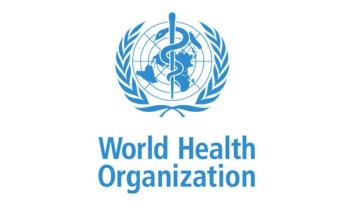
Top 5 Infectious Disease News Stories Week of August 16-23
This week, people with HIV are living longer on antiretroviral therapy but face elevated comorbidity risks, requiring tailored screening and multidisciplinary care as they age, and more.
Aging in HIV: A Review of Common Comorbidities in People Living With HIV
People living with HIV (PLWHIV) are experiencing longer lifespans due to effective antiretroviral therapy, but this population faces unique age-related comorbidities that require targeted management. A recent review highlights that cardiovascular disease, metabolic syndrome, renal dysfunction, neurocognitive decline, immunosenescence, bone loss, and frailty are more prevalent in PLWHIV compared with age-matched peers without HIV. These risks stem from chronic immune activation, adverse effects of some antiretrovirals, and the natural aging process. Clinical guidelines now recommend HIV-specific considerations for screening and treatment, including statin use for cardiovascular prevention, renal and bone density monitoring, and early cognitive and frailty assessments. A multidisciplinary approach incorporating geriatric principles is emphasized to optimize outcomes and quality of life in the aging HIV population.
Cumulative HBsAg/HBV DNA Ratio Predicts Disease Progression in Immune-Tolerant Hepatitis B
A decade-long study of 127 patients with chronic hepatitis B virus (HBV) infection in the immune-tolerant phase found that the cumulative hepatitis B surface antigen (HBsAg)/HBV DNA ratio independently predicts disease progression, offering greater accuracy than HBsAg or HBV DNA alone. Risk of progression rose sharply when the ratio was below 1.791, while higher ratios correlated with prolonged immune tolerance and reduced risk. Patients aged 30 years and older faced significantly higher progression rates, underscoring the need for earlier monitoring and antiviral intervention in this group. External validation in 109 additional patients confirmed the ratio’s predictive value, with an area under the curve of 0.85 compared with 0.67 for HBsAg and 0.64 for HBV DNA. These findings support the ratio’s potential as a biomarker to guide treatment decisions and reduce long-term disease burden in immune-tolerant HBV.
Global Study Finds Gaps in Hepatitis B Diagnosis, Treatment, and Care Cascade
A global systematic review and meta-analysis of 110 cohorts across 50 countries found major gaps in the hepatitis B care cascade, with most people living with chronic hepatitis B remaining undiagnosed or untreated. Hospital-based specialist models performed best, with 73.9% of patients assessed for treatment eligibility and 78.1% of those eligible initiating therapy, compared with 50.4% and 49.3%, respectively, in primary care. Community test-and-treat programs showed the highest initiation rates, with nearly 98% of eligible patients starting treatment, while retention was higher among those on antiviral therapy than untreated patients (87.7% vs 47.2%). Outcomes align with the 2024 World Health Organization guidelines, which promote simplified and integrated care models to expand treatment access, particularly in low-resource settings. Philippa Easterbrook, MD, MPH, FRCP, emphasized that linkage to care, retention, and simplified treatment criteria are essential to improving engagement and outcomes, with lessons from HIV and HCV care offering a pathway toward scalable, decentralized models for hepatitis B.
HHS Reinstates Task Force on Childhood Vaccine Safety Amid Rising Exemptions and Hesitancy
The US Department of Health and Human Services (HHS) has reinstated the Task Force on Safer Childhood Vaccines after a 27-year hiatus to strengthen oversight of pediatric immunizations amid rising exemptions and hesitancy. Led by NIH Director Jay Bhattacharya, with senior FDA and CDC participation, the panel will focus on reducing adverse reactions, refining vaccine monitoring, and guiding safety research, with its first report to Congress expected within two years. The move comes as kindergarten vaccine exemptions reached a record 3.6% in 2025, measles cases exceeded 1,300, and HHS recently adopted recommendations to remove thimerosal from pediatric influenza vaccines. At the same time, new safety data, including a large Danish cohort study, found no association between aluminum-containing vaccines and chronic disease. Federal officials emphasize that the Task Force is part of a broader effort to modernize immunization programs and restore public trust through transparency and evidence-based oversight.
The Consequences of Doxycycline Postexposure Prophylaxis
Doxycycline postexposure prophylaxis (dPEP) has shown significant efficacy in preventing syphilis, chlamydia, and gonorrhea among men who have sex with men (MSM) and transgender women, leading to CDC recommendations for its targeted use; however, new evidence indicates it is driving rapid emergence of tetracycline resistance. A King County, Washington surveillance study found tetracycline-resistant Neisseria gonorrhoeae rose from 27% in early 2023 to 70% by mid-2024, with high-level resistance increasing from 2% to 65%. Frequent dPEP use, defined as more than 3 doses per month, was independently associated with both tetracycline resistance and high-level resistance. Additionally, dPEP users had higher colonization with tetracycline-resistant Staphylococcus aureus and Group A Streptococcus. These findings suggest a dose-response effect and highlight selective pressure on both pathogens and commensal organisms. While dPEP remains a valuable STI prevention tool in high-risk populations, experts caution that its use should be carefully balanced with the risk of accelerating antimicrobial resistance, reinforcing the need for judicious prescribing, ongoing surveillance, and targeted clinical application.
Newsletter
Stay ahead of emerging infectious disease threats with expert insights and breaking research. Subscribe now to get updates delivered straight to your inbox.



























































































































































































































































































